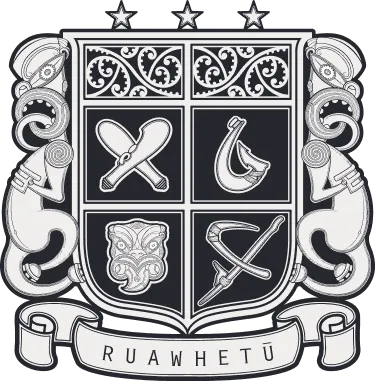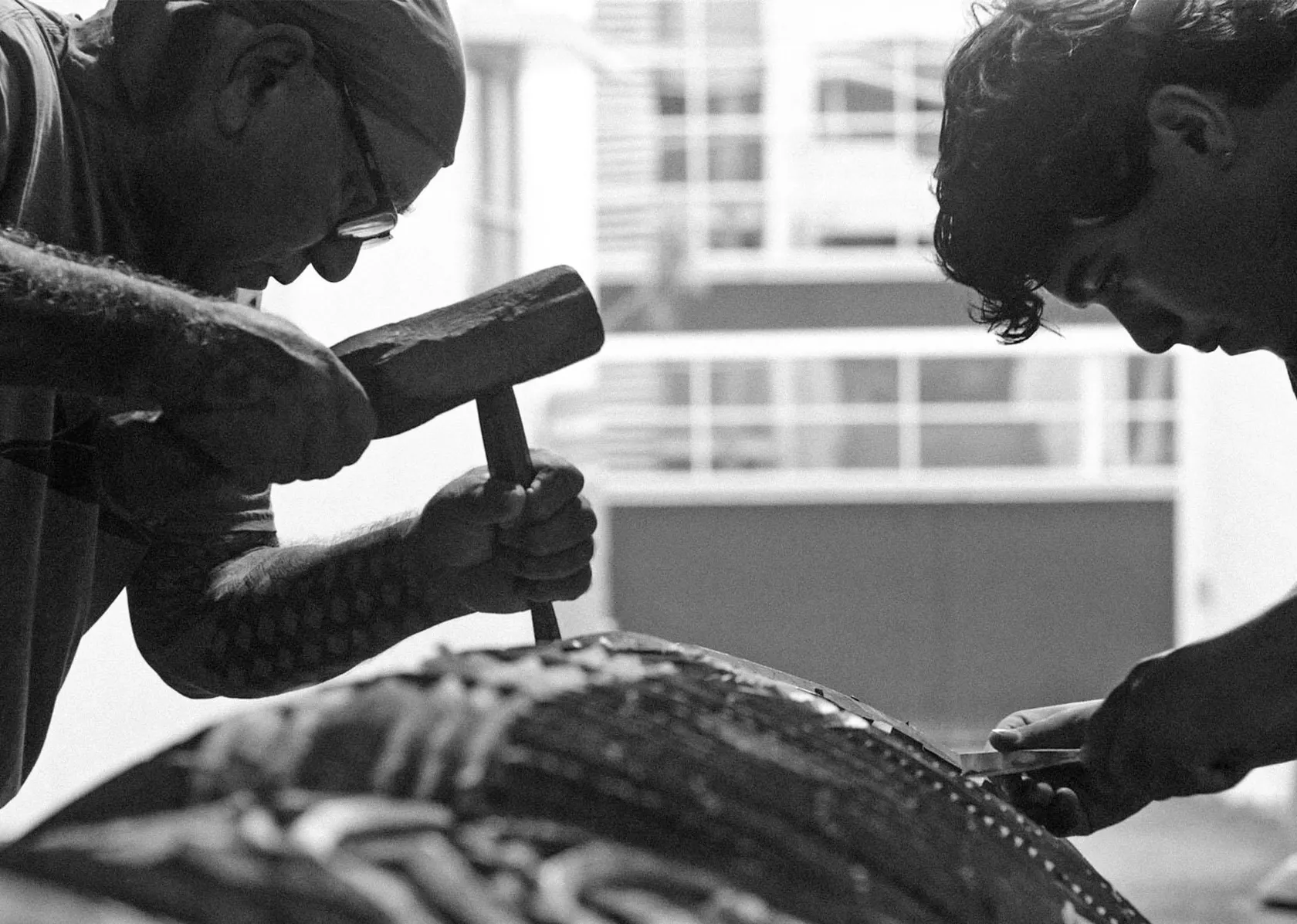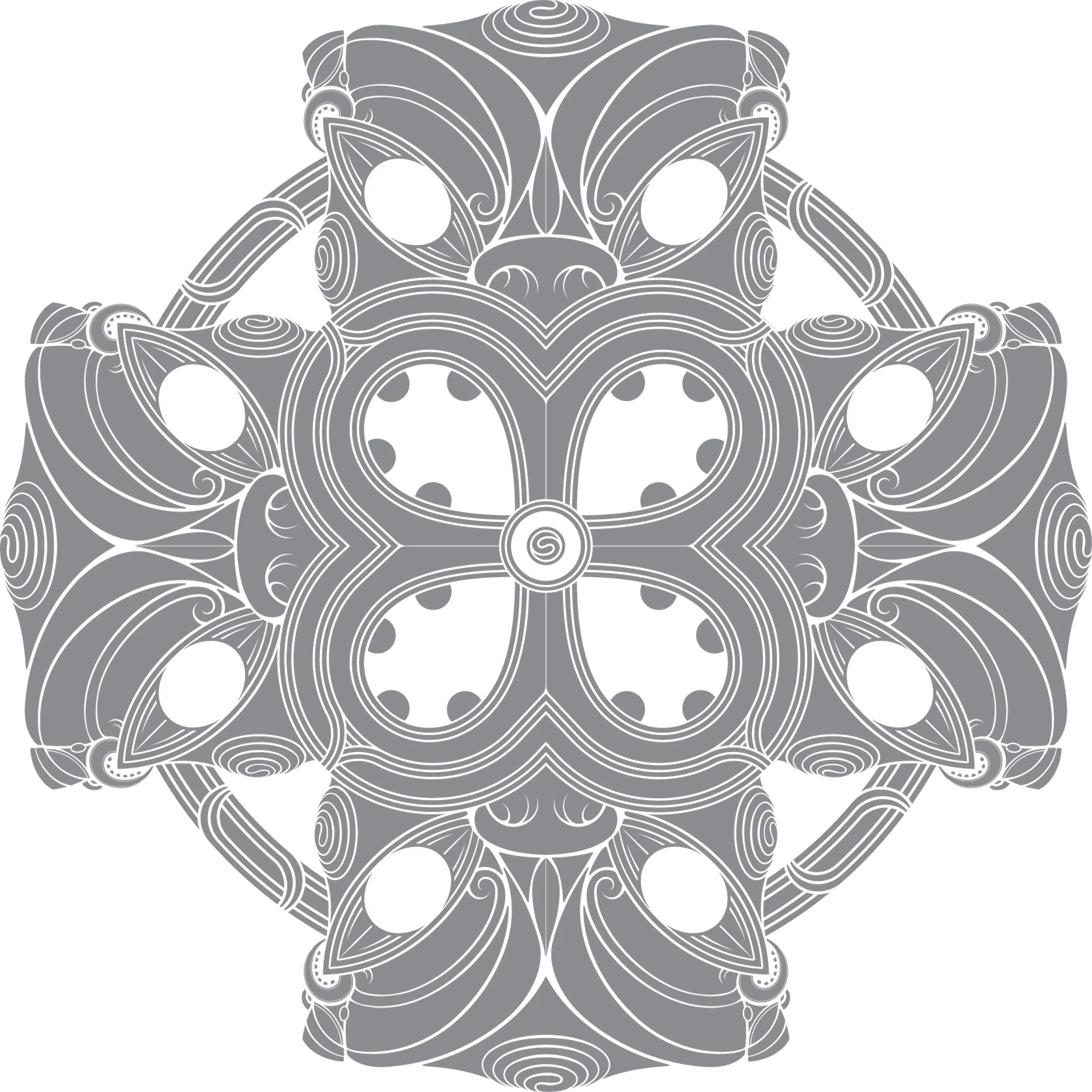Mahi toi is not simply aesthetic expression. It is an embodied knowledge system, a repository of ancestral memory, and a vital mechanism of intergenerational communication. From the structure of a whare to the hull of a waka, from a carved pou to a woven korowai, mahi toi encodes whakapapa, conveys territorial intimacy, reflects ecological intelligence, and upholds social cohesion. These forms do more than represent culture; they enact it. Mahi toi is the architecture of identity and the infrastructure of cultural continuity.
Sir Āpirana Ngata described whare as ‘the pillars of Māori identity’, and Sir Hekenukumai Busby named waka ‘the most important artform’, both for how our ancestors arrived and for how we continue to navigate our place in the world. These insights reflect the deeper function of mahi toi, beyond form or function, as carriers of cosmology, politics, and collective memory.
Practitioners of mahi toi are also not simply makers. They are diplomats, strategists, historians, and translators. They operate at the intersection of inherited knowledge and contemporary challenge. Preparing them for this role requires more than skill, it demands a recalibration of how we teach, what we uphold, and an awareness of who these practices ultimately serve.
What sustains mahi toi are the systems and environments that surround it. To ensure continuity, we must invest in the conditions that allow it to evolve — pedagogies, leadership pathways, iwi-aligned outcomes, and the intergenerational transmission of knowledge. That recalibration begins with iwi and hapū.
Knowledge grounded in lived experience, observation, and mana-enhancing relationships forms the basis of enduring learning. For Ruawhetū, this means developing place-based pedagogies and clearly defined graduate pathways in partnership with iwi, ensuring knowledge returns to where it comes from and remains active in the communities that sustain it.
Without strategic investment in these frameworks, we risk rupturing knowledge systems that are centuries in the making. We risk diminishing our collective resilience in the face of cultural, environmental, and economic shifts. But with the right models — grounded in cultural intelligence and guided by intergenerational purpose — mahi toi can continue to grow with integrity, creativity, and strength. Mahi toi is cultural technology; its success is our success, as individuals, communities, and as a nation.
Ruawhetū rises to this challenge with clarity and care. We do not claim to hold all the answers, but we are deliberate in our approach: guided by whakapapa, accountable to mana tuku iho, and shaped through partnership with iwi and hapū. Our purpose is not to preserve mahi toi in static form, but to strengthen the conditions in which it can live, grow, and adapt. We work to ensure that the knowledge, values, and identities embodied in these practices are not only sustained, but actively advanced, for those who carry them now, and those yet to come.
This is our responsibility,
this is who we are.
Ko Ruawhetū.


